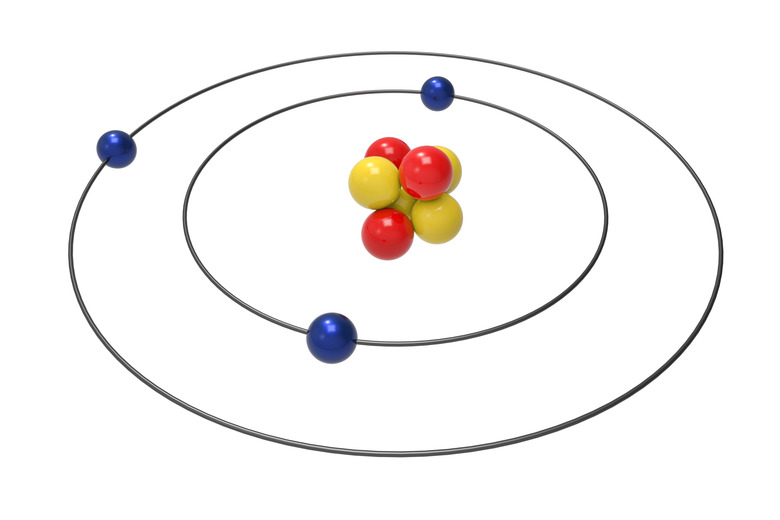How To Convert Atoms To Grams
Converting atoms to grams is an essential process in basic chemistry and forms the foundation for the more difficult calculations used in more advanced chemistry. The conversion requires a fundamental understanding of Avogadro’s Number, atomic weights, dimensional analysis and the definition of a mole of a substance. Using these items, if you know how many atoms of a substance you are dealing with, you can easily convert this to grams using the following process.
Instructions
Step 1
For the purpose of this demonstration we will assume that we are working with 14 atoms of carbon. Write “14 atoms C†on the top left of your scratch paper.
Step 2
Avogadro’s number (6.02 x 10^23) is the number of particles of a substance in one mole (mol) of that substance. There are 6.02 x 10^23 atoms of carbon in a mole of carbon and 6.02 x 10^23 molecules of water in a mole of water. Because you are using dimensional analysis to cancel out “atoms,†to the right of what you wrote in Step 1 write as a fraction, “1 mol C / 6.02 x 10^23 atoms†and prepare to multiply across, such that your equation looks like this so far:
14 atoms C 1 mol x ——————————- 6.02 x 10^23 atoms C
Step 3
Refer to the periodic table of elements and find the atomic weight for the substance you are working with, rounding to the appropriate number of significant digits. In this case, carbon has an atomic weight of 12.0 atomic mass units (amu). The molar mass (in grams) of any substance is always numerically equal to its formula weight (in amu), so for carbon, there are 12.0 grams (g) in one mole of carbon. Write this as a fraction to the right of Step 2, again multiplying. Also, put an equal sign to the far right. It should look like this:
14 atoms C 1 mol 12.0 g C x —————————— x ————– = 6.02 x 10^23 atoms C 1 mol C
Step 4
Because the units in fractions get treated the same as numbers do, the “atoms C†from Steps 1 and 2 cancel each other out and the “mol C†from Steps 2 and 3 cancel out, leaving you with grams (g) as the unit of measurement your answer will be in. This is a good way to check your work.
Step 5
Multiply across the top to get 168 g C and across the bottom to get 6.02 x 10^23.
Step 6
Divide the top by the bottom, minding significant figures, to get 2.8 x 10^22 grams of carbon in 14 atoms of carbon.
Things Needed
- Calculator
- Periodic table of elements
- Avogadro’s number (for this instruction, we will round to 6.02 x 10^23)
- Paper and pencil
TL;DR (Too Long; Didn't Read)
Once you have done this a few times, you will see that multiplying the number of atoms and dividing the result by Avogadro’s number (6.02 x 10^23) will suffice.
Warning
Use only as many significant figures as the least precise number in your calculation. In this example, 14 is two significant figures, so our answer is to two figures as well.
References
- “Chemistry: The Central Science;†Brown, Bursten, & LeMay; 1997
Cite This Article
MLA
Kelly, Dylan. "How To Convert Atoms To Grams" sciencing.com, https://www.sciencing.com/convert-atoms-grams-2678/. 13 March 2018.
APA
Kelly, Dylan. (2018, March 13). How To Convert Atoms To Grams. sciencing.com. Retrieved from https://www.sciencing.com/convert-atoms-grams-2678/
Chicago
Kelly, Dylan. How To Convert Atoms To Grams last modified March 24, 2022. https://www.sciencing.com/convert-atoms-grams-2678/
